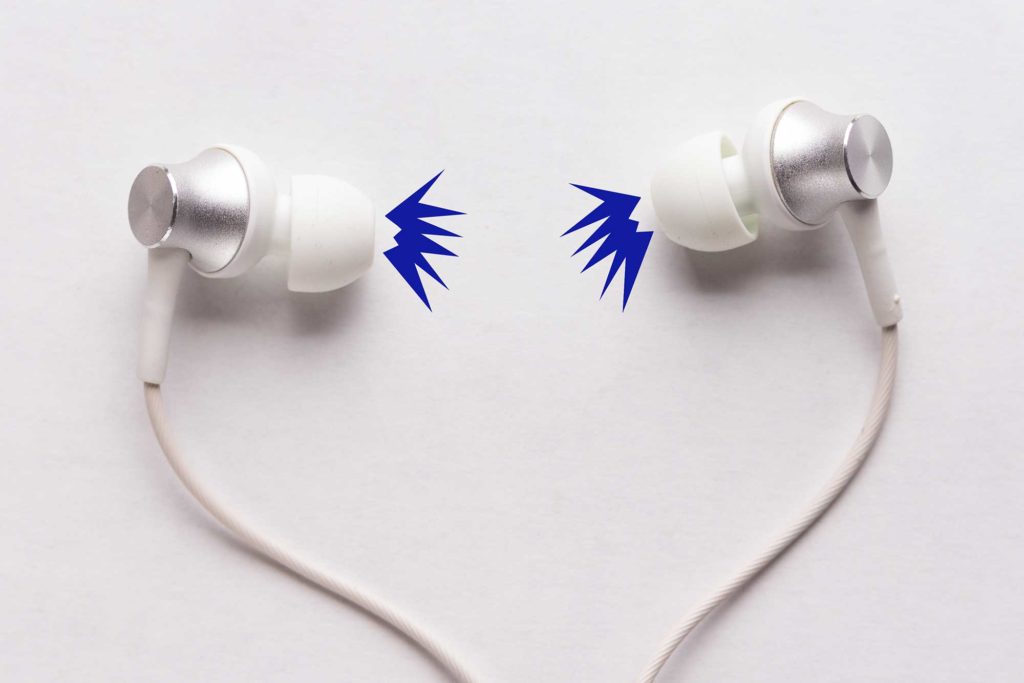According to a report in Archives of Pediatrics and Adolescent Medicine: “Children and adolescents can develop hearing loss by listening to loud noises or music. The hearing loss can happen with extremely loud noise over a short time frame, such as when a teen goes to a music concert for a night or goes on a hunting trip and listens to gunfire for a day. Hearing loss can also happen with loud noises over a longer time, such as when teens listen to loud music in their headphones over weeks or months.” (Moreno et al, 2011) This report was published ten years ago, and still rings true today.
A recent report of a survey of adolescents noted that three in four 12- to 17-year-old students are exposed to loud sounds at school, and 46.5% were exposed to loud sounds on a routine basis. A large majority the students responding to the survey (85.9%) reported that they were not provided with hearing protection during class or during the activities when they were exposed to the noise. Less than a third (29.6%) reported being taught how to protect their hearing during noisy activities. (Eichwald and Scinicariello, 2020)
Hearing is not something limited to those at risk for age-related hearing loss. Hearing loss affects younger people as well, and research suggests that its prevalence is rising.
Hearing loss is affecting younger Americans more often
A report from NBC News found that hearing loss rates among teens in the 2010s are up approximately 30% when compared to teens in the 1980s and 1990s. (Shargorodsky et al 2020) One of the main reasons this is worrying is because younger people often don’t think they have to worry about their hearing, and they are therefore less likely than their elders to seek treatment at the first sign of trouble.
The most common causes of hearing loss in younger people
What is driving this trend? The most common danger is the ubiquity of earbuds, which people are wearing for longer periods of time and listening to at higher volume levels. Also, because earbuds fit directly inside the outer ear canal, there is less distance between the speaker and the eardrum, increasing the likelihood that they will lead to hearing-related problems.
How hearing loss affects the young
Once the nerve cells and connections of the ear are damaged, that damage can’t be undone. It can only be managed via various treatments which do not cure, only manage the hearing deficit. Therefore, the earlier one develops hearing loss in life, the longer that they will have to live with it. Additionally, most teens are still in the midst of their education and battling hearing loss can make it more difficult to concentrate in school and stay engaged.
Listening to music at high volumes also puts young people at greater risk for tinnitus. Tinnitus is a condition that is also known as “ringing in the ears,” but the actual sounds experienced can take many forms, including buzzing, whistling, and even clicking.
How to combat the prevalence of hearing loss in younger people
Taking care of our hearing is a lifelong commitment, and it starts with common sense practices when we are young. Keeping the volume on earbuds at a moderate or low level and limiting the amount of time that they are worn is a simple protection measure. When attending a concert, sporting event, or other loud events, stand a reasonable distance away from speakers and consider using earplugs to block out excessive noise levels.
If hearing loss is noticed, it is vital to seek treatment as soon as possible to try to limit the damage for the future. Our goal is to help every patient, regardless of their age, get the proper treatment for their hearing loss and maximize their ability to communicate. Schedule an appointment at one of our locations near you to see what a difference the right hearing solution can make for you.
Eichwald J, Scinicariello F. Survey of Teen Noise Exposure and Efforts to Protect Hearing at School — United States, 2020. MMWR Morb Mortal Wkly Rep 2020;69:1822–1826.
Moreno MA, Furtner F, Rivara FP. Preventing Hearing Loss Among Children and Adolescents. Arch Pediatr Adolesc Med. 2011;165(12):1141. doi:10.1001/archpedi.165.12.1141
Shargorodsky J, Curhan SG, Curhan GC, Eavey R. Change in prevalence of hearing loss in US adolescents. JAMA. 2010;304(7):772-778. doi:10.1016/j.yped.2010.12.008

